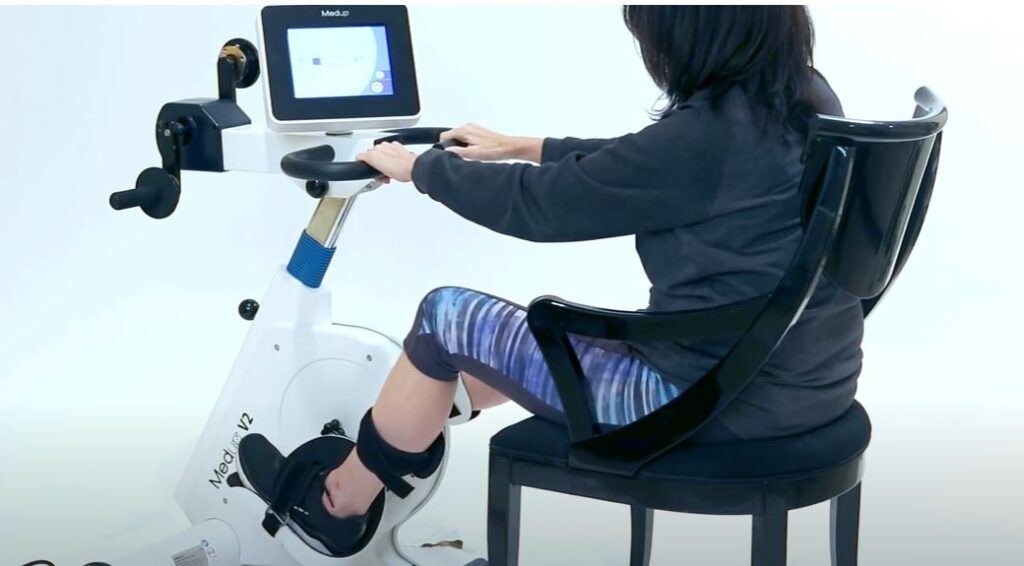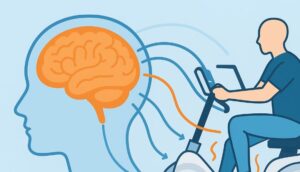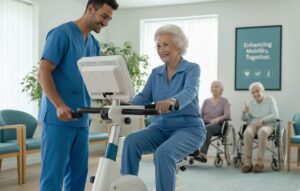
In the realm of rehabilitation, where each step forward is often hard-won, a revolutionary approach is reshaping the landscape of recovery for those grappling with muscle spasticity. Cycle therapy, a method leveraging specialized stationary bicycles, emerges as a beacon of hope for individuals navigating the challenging aftermath of illness, trauma, or paralysis. Beyond its physical dimension, cycle therapy holds the promise of holistic healing, offering a myriad of benefits that extend far beyond the confines of the gym. Let’s delve into this transformative modality, uncovering its profound advantages and the potential it harbors for enhancing quality of life.
Understanding Muscle Spasticity: A Barrier to Movement
Before delving into the merits of cycle therapy, it’s crucial to grasp the nature of the adversary it confronts: muscle spasticity. This condition, often stemming from neurological disorders, spinal cord injuries, or strokes, manifests as involuntary muscle contractions, leading to stiffness, pain, and impaired mobility. These spasms can profoundly disrupt daily life, hindering basic activities such as walking, reaching, or grasping objects. Moreover, muscle spasticity may exact a toll on mental well-being, fueling frustration, anxiety, and a sense of isolation as individuals grapple with their diminished physical capabilities.
The Rise of Cycle Therapy for Advanced Rehabilitation
Enter cycle therapy —a pioneering intervention that harnesses the power of repetitive, controlled cycling movements to target muscle spasticity head-on. Unlike traditional therapies, which often rely on passive stretching or medication, cycle therapy adopts a proactive stance, engaging individuals in dynamic, purposeful exercise tailored to their unique needs. At the heart of this approach lies the recumbent or upright stationary bike, equipped with adjustable settings to accommodate varying levels of mobility and strength.

Leading the Benefits of Cycle Therapy
1. Muscle Relaxation and Range of Motion Enhancement
By engaging in rhythmic cycling motions, individuals can gradually coax their muscles into relaxation, mitigating the intensity of spasms and unlocking newfound freedom of movement. Through regular sessions, participants may experience a notable expansion in their range of motion, enabling them to tackle everyday tasks with greater ease and confidence.
2. Strength Building and Endurance Improvement
Cycle therapy serves as a dynamic platform for strengthening weakened muscles and enhancing overall endurance. As individuals pedal against resistance, they not only fortify targeted muscle groups but also cultivate cardiovascular fitness—a crucial component of long-term health and vitality.
3. Neuroplasticity Promotion and Motor Skill Refinement
Beyond its physical effects, cycle therapy holds profound implications for neurological rehabilitation. Through repetitive cycling motions, participants stimulate neural pathways, fostering neuroplasticity—the brain’s remarkable capacity to reorganize and adapt. This process lays the groundwork for motor skill refinement, empowering individuals to reclaim lost abilities and hone new ones with persistence and dedication.
4. Pain Alleviation and Stress Reduction
The therapeutic benefits of cycle therapy extend beyond the realm of movement, offering relief from the persistent pain and discomfort often associated with muscle spasticity. As individuals immerse themselves in the rhythm of cycling, they may experience a welcome reprieve from physical tension, accompanied by a sense of mental calm and serenity.
5. Enhanced Circulation and Tissue Oxygenation
Through regular engagement in cycle therapy, individuals promote optimal circulation, facilitating the delivery of oxygen-rich blood to muscles and tissues. This heightened blood flow not only accelerates the healing process but also bolsters cellular function, fostering vitality and resilience from within.
6. Mood Elevation and Social Connection
Perhaps one of the most profound benefits of cycle therapy lies in its capacity to uplift spirits and forge meaningful connections. As participants embark on their rehabilitation journey, they find themselves enveloped in a supportive community of peers and professionals, united by a shared pursuit of healing and empowerment. This sense of camaraderie fosters a nurturing environment where individuals can draw strength from one another, celebrating victories both large and small along the way.
Navigating the Path Forward: Embracing Cycle Therapy as a Catalyst for Change
As we reflect on the transformative potential of cycle therapy, it becomes abundantly clear that its benefits transcend the confines of physical rehabilitation. By harnessing the power of movement, resilience, and human connection, cycle therapy paves the way for a brighter, more vibrant future—one where individuals can reclaim agency over their bodies, minds, and lives. As practitioners, caregivers, and advocates, let us embrace this paradigm shift in rehabilitation, empowering those affected by muscle spasticity to embark on a journey of healing, growth, and unfettered possibility.
Amplifying Awareness and Accessibility
Experts and patients alike seek inclusivity and equity for better health outcomes. Collectively, amplifying awareness of cycle therapy and expand access to this transformative modality is a must. By championing research, advocacy, and policy initiatives, we can ensure that individuals of all backgrounds and abilities have the opportunity to benefit from the profound advantages of cycle therapy. Together, let us pave the way for a future where barriers are dismantled, potential is unleashed, and every individual is empowered to thrive.
Cycle therapy can provide hope for those grappling with muscle spasticity, offering a multifaceted approach to rehabilitation that transcends conventional boundaries. From muscle relaxation and strength building to neuroplasticity promotion and mood elevation, its benefits are as diverse as they are profound. As we journey forward, let us embrace cycle therapy as not merely a treatment modality, but a catalyst for transformation—a testament to the resilience of the human spirit and the boundless possibilities that lie within each of us.




